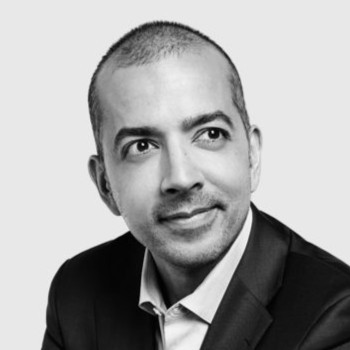Capital markets firms have a really strong aspiration to achieve trading and operational transformation and simplification through modular multi asset solutions that span a trade lifecycle, and help them move towards a single global componentized platform and a common data model, according to Vijay Mayadas, President, Capital Markets at Broadridge Financial Solutions.

Speaking at the “Vision 2022: Navigating Today’s Capital Markets Transformation (Americas)” webinar on Monday, April 4, he said: “The complexity here is that each firm has a different starting point on this journey, a different risk appetite around speed and change, and different perspectives on how they structure their journey, how to simultaneously simplify and modernize technology stacks, how to manage the stranded costs issue around legacy system, and how to insert emerging technologies,” he said.
The webinar featured Broadridge and other leading financial institutions including Firebrand Research, State Street, RBC Capital Markets and Sumitomo Mitsui Bank to discuss how they are overcoming the most pressing capital markets challenges through technology and operational transformation.
Mayadas said: “We see a real uptick in focus on how to best apply these emerging technologies across the technology stack.”
He added that AI and DLT are two examples where there’s a lot of acceleration in terms of use case deployment.
“We see a lot of potential in these technologies,” he said.
The top technological challenges for the firms are legacy systems, data, regulation and streamlining processes, Virginie O’Shea, Founder of Firebrand Research, said.
Mark Mullaly, Managing Director, Digital Solutions & Client Insights (DSCI) at RBC Capital Markets, said he was not too surprised that the top three came in that order.
Nick Varelakis, Head of Operations Transformation, Managing Director at Sumitomo Mitsui Banking Corporation, added that everyone’s afraid of the legacy infrastructure, but the right people component shouldn’t be ignored.
“We often lose track of the people component of that when we’re automating things with the people who have that history to build up the right functionality, the right aircraft and the right people. Without it, it never worked,” he added.
Tony Bisegna, Head of Global Markets at State Street, noted that technology is the catalyst for change right now in trading.
“It’s giving traders better tools, allowing traders to be able to handle more risk higher volumes to trade faster, and it’s also providing better access to liquidity,” he said.
He added that traders have better tools now to manage liquidity through varieties of different algos, whether it be in equities or other currencies.
According to Justin Llewellyn-Jones, Head of Capital Markets, North America (Equities, FX & Derivatives) at Broadridge Financial Solutions, there’s always a desire to increase business agility and growth.
The backdrop of that is ensuring the stability and performance of the solution and just day-to-day compliance with industry and regulatory changes as well, he said.
“Those are the sort of facets that people are trying to deal with,” he said.
He thinks there’s also a “tremendous amount of focus on automation or digitization”.
He also mentioned focus on data and client engagement as well interoperability.
Bisegna added that very often transformation gets wrapped into a big cost cutting initiative. “That’s really not what transformation is about,” he stressed.
Varelakis said: “I call transformation modernization, not consolidation.” He thinks that’s a super important component.
“I think it’s imperative,” he said.
“You look at how you can build it organically from the top down. Technology can work as fast as possible, but you got to make sure you got it through your entire life stack,” he added.
O’Shea said there’s been a lot of discussion about replacement of humans in the middle and back office and the ops side of things.
“The days of manual work are essentially over now, but they’re going to be increasingly difficult over time,” commented Varelakis.
“Automation is going to get introduced into the trade lifecycle, whether it’s in the trading world or in the operations world,” added Llewellyn-Jones.
The ultimate automation is going to continue to occur, and more and more workflows will continue to be automated, he said.
He added that AI is capable of consuming a tremendous amount of data, looking for patterns and looking for events.
“Sequencing means that you get into almost a predictive realm where the same patterns and events and activities are occurring, and the human being may not be quite capable of keeping up to speed as trading continues to speed up,” he said.




